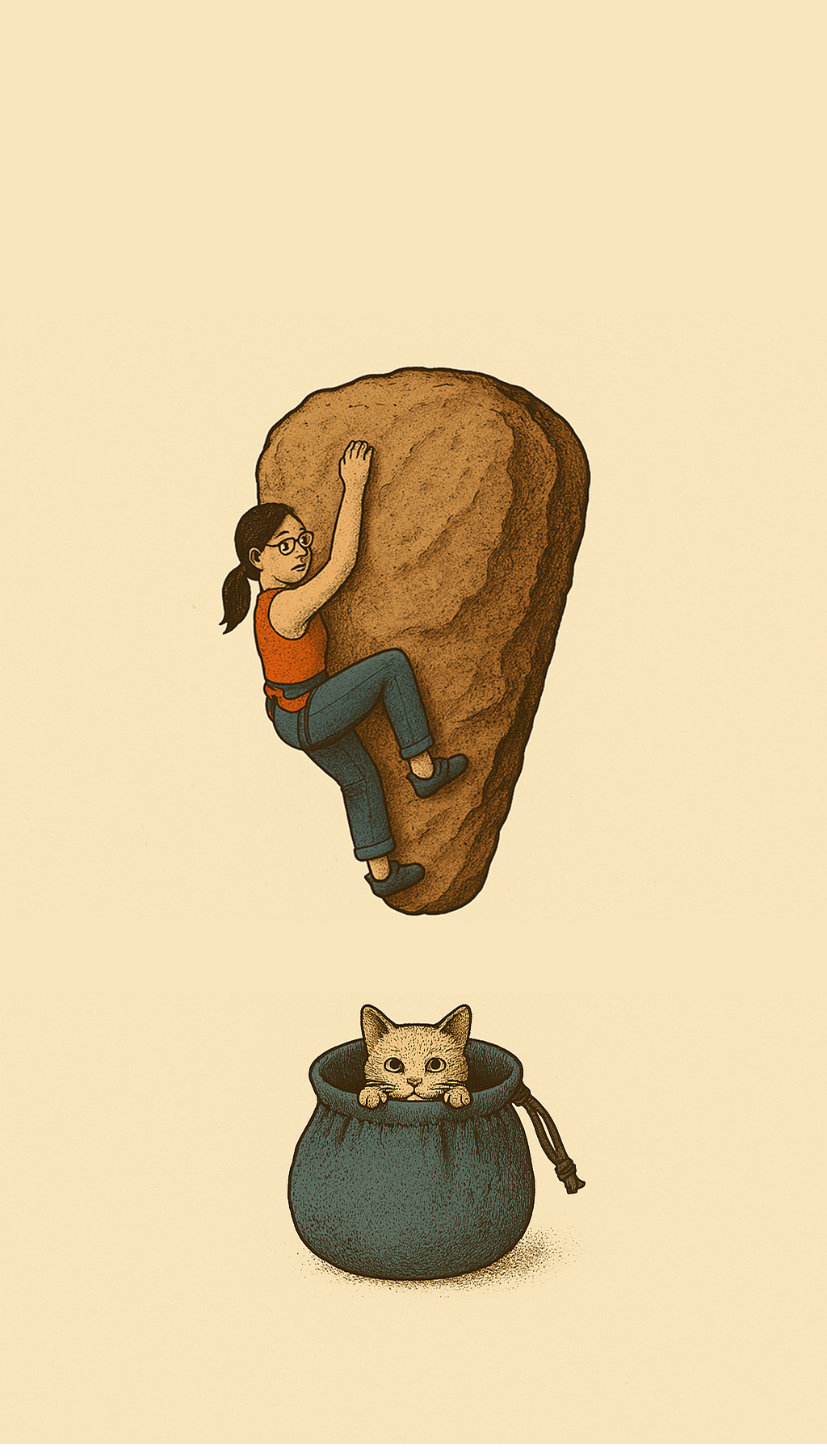Drawing with the Hips: Driving Hands-free Fine Motor Skills
AttentionWOD 250615
When Hands Take Over: Relearning Precision from the Ground Up
Why do our arms bend so much while climbing? Why do our fingers so often overgrip? And why, despite knowing that footwork and hip positioning are the real keys to success, do we find it so hard to actually pay attention to them when it matters?
There’s a rarely discussed, yet surprisingly intuitive answer:
It’s because our brains deeply trust our hands.
Upper Body Bias: A Hidden Habit
We’ve spent our entire lives using our upper limbs for fine motor tasks that require accuracy and problem-solving. Think about it: handwriting, using keys, threading needles, knitting, watering tiny plants, typing, texting—all of these reinforce the hands as our go-to tools for doing smart things well.
So when a move on the wall requires precision, accuracy, and control, our nervous system doesn’t hesitate—it defaults to the body part it knows best. Our hands take over. Our arms tighten. Our shoulders do more work than they should.
Meanwhile, our lower body—hips, knees, ankles, toes—often gets treated like a blunt instrument. Powerful, sure. But not subtle. Not trustworthy. Not smart.
But What If…
What if we expected the same precision from our feet, ankles, knees, and hips?
What if we gave them the time and attention required to learn the kind of fine motor control we usually reserve for our hands?
Climbing demands—and rewards—this kind of lower-body intelligence. But it doesn’t come automatically. It needs to be trained.
Here’s a simple rest-day, warm-up, or cool-down drill that teaches your lower body how helpful it can be in managing accuracy and movement control—so your hands don’t always have to take over.
🌀 Drill: Lower Body Drawing Practice
Stage 1: Ground-Based (2–5 minutes)
Stand facing a wall or vertical surface, feet at least shoulder-width apart.
Pick a small visual target just below eye height—a light switch, bolt hole, color shift in the rock, painting frame, or anything precise and distinct.
Keep your feet planted. Keep your head still.
Now, use only your hips, knees, ankles, and toes to shift your visual field around that fixed point.
“Draw” a circle around the object by moving your lower body (not your eyes or head).
Then a square. Then a triangle. Try both clockwise and counterclockwise.
Your visual target remains still. You’re moving around it by articulating from the ground up.
Stage 2: Wall Contact (2–5 minutes)
Repeat the drill on the wall with both feet and both hands on jugs, low to the ground.
Choose a small visual target (chalk mark, bolt hole, edge of a crimp).
Keep contact points the same. Move your hips, knees, and feet subtly to shift your body’s position and visual field around the target—again drawing shapes.
Observe: What happens to the tension in your arms? What muscles wake up in your legs and core? Where does control come from?
Stage 3: Integrated Warm-Up (Optional Ramp-Up)
During your on-the-wall warmup, pause at select body positions.
Choose a visual target at each pause and repeat the drawing drill using only lower body adjustments—no hand repositioning.
Then climb on, continuing the problem or route after completing each shape.
👣 What You’re Training
Lower body spatial intelligence
Subtlety of hip and ankle control
Visual-motor coordination not dominated by the hands
A new narrative of trust between brain and lower body
The Bigger Picture
Climbing isn’t just about strength or tactics—it’s about teaching your whole body to think. And that means unlearning the bias that only your hands know how to solve hard problems.
Let your feet learn. Let your hips lead. Let your lower body draw the path—so your upper body doesn’t always have to carry it.
